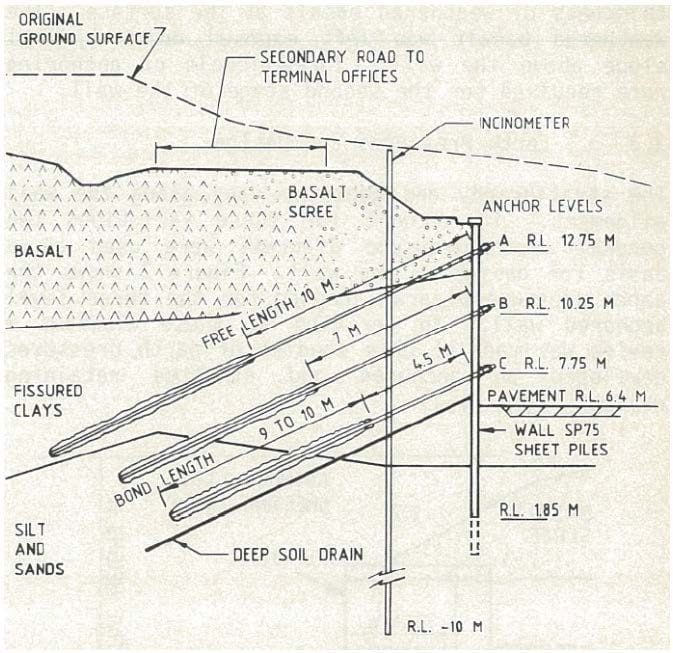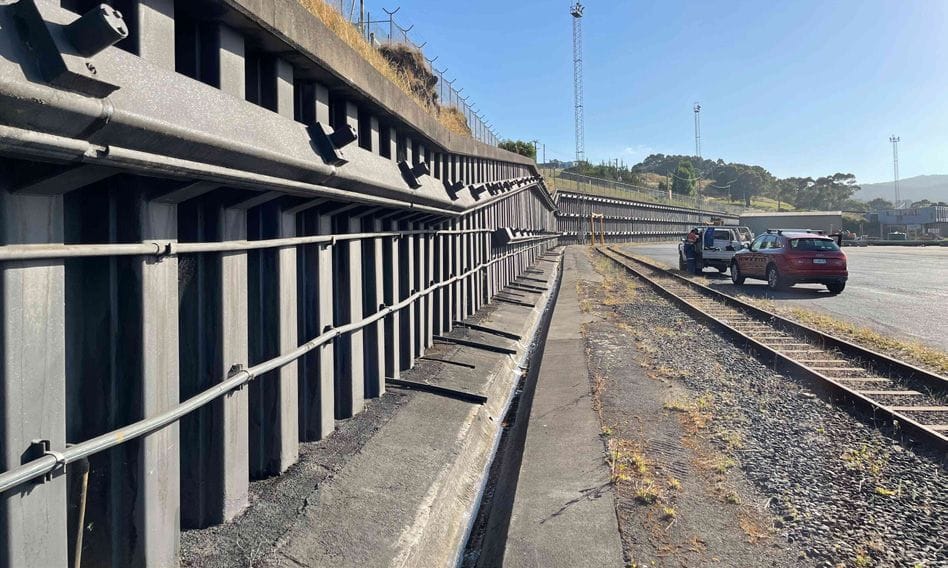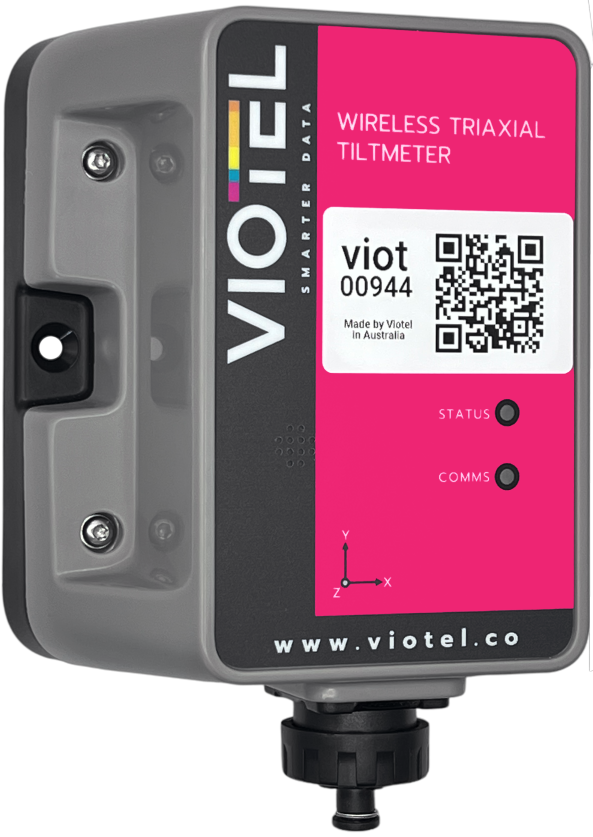The service life of key infrastructure is increasingly being extended well beyond its original design life. There are many cases of retaining structures constructed in the 1970’s with 30 year design lives, still being in service today. Structural health monitoring is required to make informed asset management and risk decisions regarding interventions to prolong service life, repair or replacement.
Anchored sheet pile walls are a specific case where corrosion of either the anchors or the sheet piles could lead to progressive failure and catastrophic collapse, with significant safety consequences for the areas above and below the wall.
Viotel recently provided real-time monitoring for a 350m long 8.5m high anchored sheet pile wall retaining an embankment beneath an access road to a port. The wall was constructed in 1982 with a 30 year design life. The Viotel Tilt nodes that were installed to provide real-time monitoring movement of the walers along the sheet pile. The Viotel dashboard was set up with movement thresholds triggering email alerts to relevant asset managers / risk owners.








